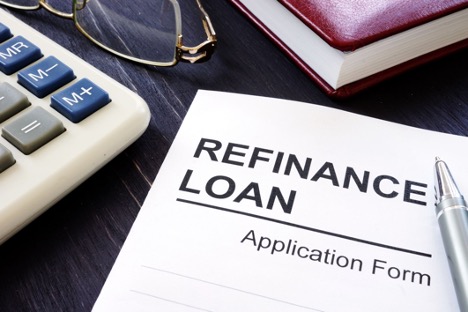
How to Refinansiere a Personal Loan
If you don’t have enough money in your account to meet your immediate financial needs, a loan can help. Loans can be used to establish a new company/ venture or to grow an existing one. Securing a credit can be quite beneficial in any situation.
Due to the urgency of some financial necessities, one may not take the time to read the terms and conditions of obtaining credit from a lender. A miscalculation during the credit application procedure can result in unanticipated effects that are costly to the borrower. Fortunately, debt refinancing is an option for getting out of this situation.
Debt refinancing is the process of replacing existing debt with a new financing offer that has better terms and circumstances. In this case, the individual or organization settles their outstanding debt by issuing a new credit with better terms. If you’re looking to refinance your loan but aren’t sure where to start, you can click here for some help.
The reasons why people choose to refinance their debts will be discussed in this article. We’ll also talk about the measures you need to follow if you wish to refinance your debt.
Refinancing Options

The following are some of the refinancing options:
Cash-out
When the value of the asset used as collateral or security for credit has increased, this is utilized. The transaction entails the withdrawal of the asset’s value in exchange for a larger interest rate and credit. This means that if the value of an asset rises, you can access it by taking out a credit rather than selling it.
Rate-and-Term
This is the most common method of debt consolidation. This option allows for an outstanding debt to be serviced with a new credit agreement that has less interest rate.
Option to Cash-in
This refinancing option allows you to pay off a portion of your debt in exchange for a lower loan-to-value ratio. It’s all about making lower debt payments over a period.
Consolidation Refinancing
This can also be used to refinance your debt. When a borrower obtains a credit at a cheaper rate than the current average rate charged by various credit institutions, this term is employed. It requires the firm or customer to apply for new credit with lower interest rates and pay off the old one with the new one. This arrangement results in cheaper interest payments on the existing principal.
The Benefits of Debt Refinancing

Some of the reasons you might need to refinance your debt are as follows:
Interest Rates are Lower
Everyone prefers advantageous terms and conditions, particularly when it comes to financial transactions. The interest rate on the new credit is usually lower than the existing debt. This will allow you to save money while also enabling an early repayment. Paying back your credit on time increases your credit score, which will make it easier for you to obtain loans in the future.
A Longer Repayment Term
With the new credit conditions, you can reduce the amount repaid monthly by a significant amount, helping you to repay over a longer period of time. This, however, is determined by the lender, amount, type of loan, and the borrower’s creditworthiness. A longer repayment term has the disadvantage of a higher interest rate, especially when you compare it to a short-term repayment plan with a lower interest rate. However, your financial requirements will be the deciding factor.
Cash Flow and Usage
Reducing your monthly repayment allows you to have more cash on hand, easing the financial strain you’re under. With this information, you can easily think of more ways to put your spare money to good use.
Financial Situation Has Changed
It’s possible that your financial situation may have changed. It was simple to afford the large monthly credit installments when you had a well-paying job. However, a change in fortune can greatly affect your repayment schedule. If you lose your job, you will begin to hunt for ways to reduce your monthly credit payments. Refinancing can help in this situation as it allows you to reduce your monthly payment to a level that you can afford.
Factors to Consider Before Refinancing a Loan

Here are some important considerations:
Check Lender’s Reputation
Some lenders may offer interest rates that appear to be too good to be true. If you are unsure about the terms, don’t take out the loan. Make sure any lender you’re thinking about has a good reputation. What are people’s opinions on their services? Customer reviews can be found on their websites.
Purpose
To avoid situations where you enrich different lending institutions, you must identify your debt reduction goal. You must decide whether you want to go for cheaper interest rates, more cash, or a shorter or longer payback plan.
Credit Rating
Before you may qualify for low-interest rates, most lending companies require a credit score of at least 760. Individuals with lower credit ratings may be eligible for loans, but the interest rates will be higher. Knowing this should motivate you to improve your credit score before requesting loans. If you’re looking for ways to enhance your credit score, go to https://www.investopedia.com/how-to-better-your-credit -score-4590097
Debt-to-Income Ratio
This is a measure of how much debt a person has compared to how much money they earn. It is calculated by dividing your total monthly payments by your total monthly income. Lenders are highly stringent about debt-to-income ratios, which have resulted in high credit score criteria. However, variables such as a high income, a long work experience, or a decent savings account can improve one’s chances of getting a loan.
Current Lender
When refinancing your debt, you must take your time to choose a lender who offers better interest rates, terms, and conditions. If your present lender’s terms are not favorable, you may have to explore alternative options that provide better deals. You can use the services of a broker or financial counselor if you are unsure about the process.
Refinancing Points
Before replacing a loan, it’s critical to evaluate interest rates and points. Points are 1 percent of the total amount borrowed and are typically paid to lower the interest rate. It is either returned at the end of the term or incorporated into a new loan.
Breaking Point
The break-even point is reached when the cost of replacing one credit with a new one is offset by your monthly earning. Refinancing your debt is not a wise idea if your savings are insufficient to cover the loan. This implies that you must perform a thorough computation to ensure that you are on the right track.
Loans that Can Be Refinanced
There are a variety of loans that can be refinanced, and they include the following:
Automobile Loans
These are secured loans in which your home serves as security. They’re typically used to purchase a car, but if you don’t keep up with your payments, you run the risk of losing the car. You can read articles explaining steps to refinancing a car loan for more information.
Financial institutions such as banks, online lenders, credit unions, and car dealerships can offer this type of loan. If you want to get credit like this from a dealership, you should be aware that the interest rate is usually greater than what you can get from other lenders.
Loans for Students
These are credits that are available to college students and their families to help with the cost of postsecondary education. There are two types of student loans: government student loans and private student loans.
If you need this type of loan, we recommend going with federal loans because they typically offer cheaper interest rates and more advantageous payback conditions.
Mortgages
Credit unions, online lenders, and banks offer these loans to help consumers finance the purchase of a property. This type of borrowing is secured by your home, and if you miss your monthly repayments, you risk losing your home to foreclosure. Because mortgages are regarded as secured loans, they have the lowest interest rates.
Balloon Mortgage
Balloon mortgage requires you to pay a low or no balance for the initial months, and then you must pay the full debt at once. Because of its structure, it is considered a high-risk loan. This type of credit is supposed to offset the accrued interest, but it may not be available when the borrower needs it, resulting in penalties.
These are some relevant tips to help you understand how to refinance a loan. You can also check out other internet sources if you need more information.
Conclusion
Refinancing is done to help debtors get better credit repayment terms and circumstances, especially in reaction to changing economic conditions. Longer or shorter loan repayment terms, a decrease in the fixed interest rate, and conversion from a variable to a fixed interest rate, are other factors that influence people to make a decision.
Now that you know this, you can contact a broker to help you with the procedures involved. You can also share this information with family and friends who may need it.


































